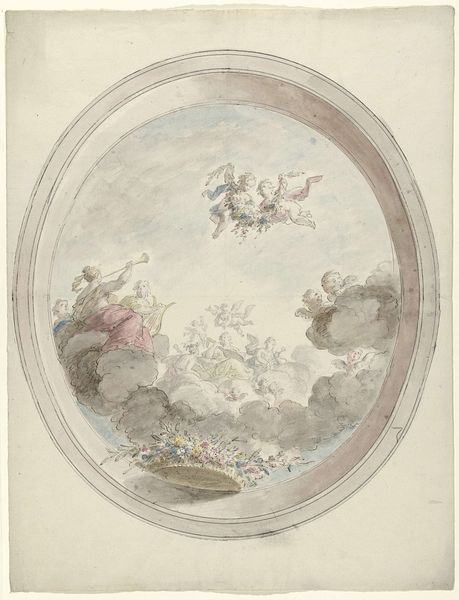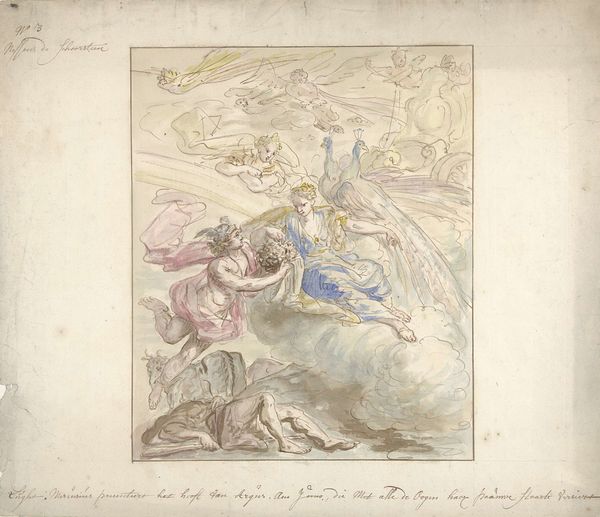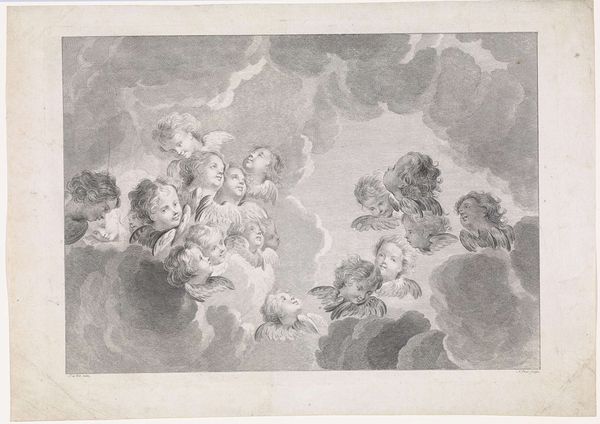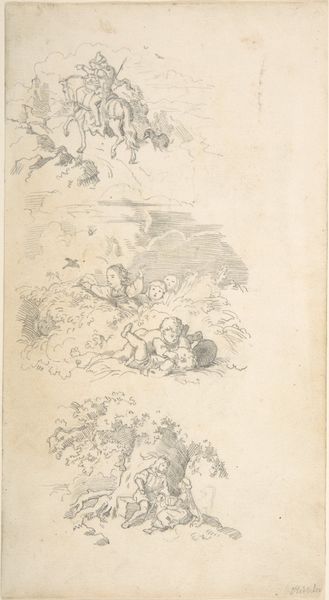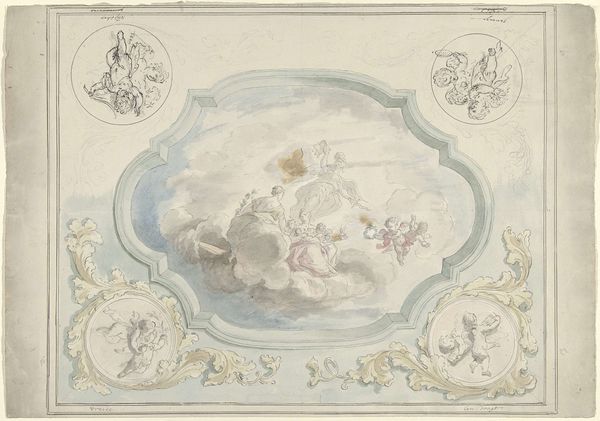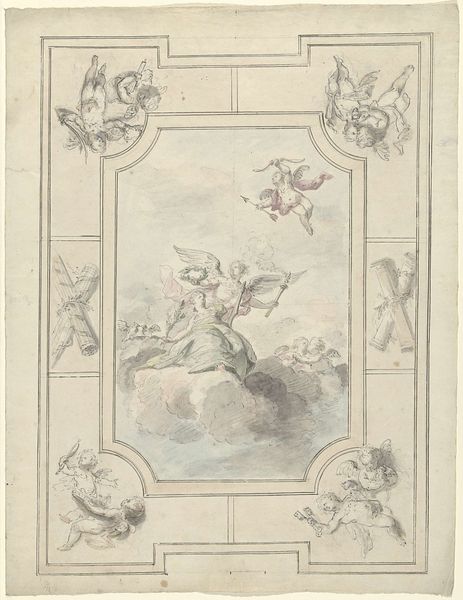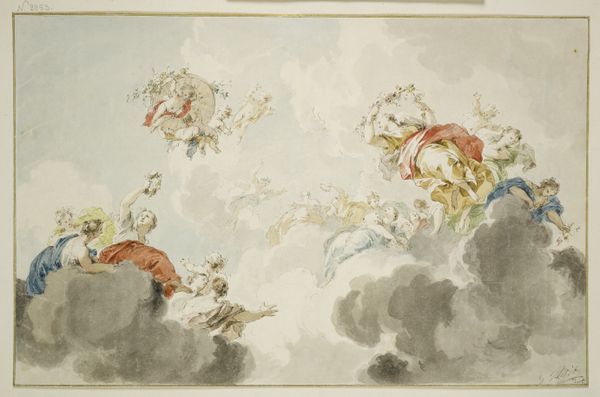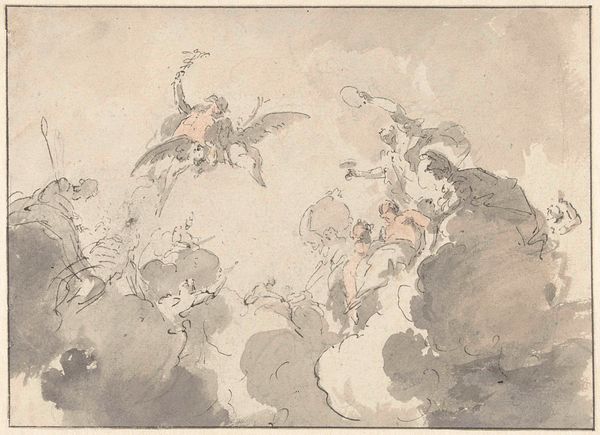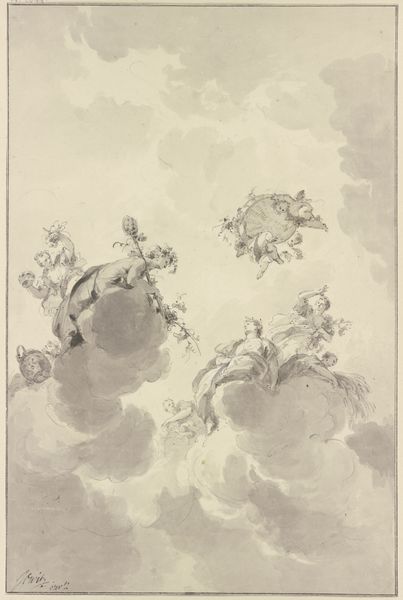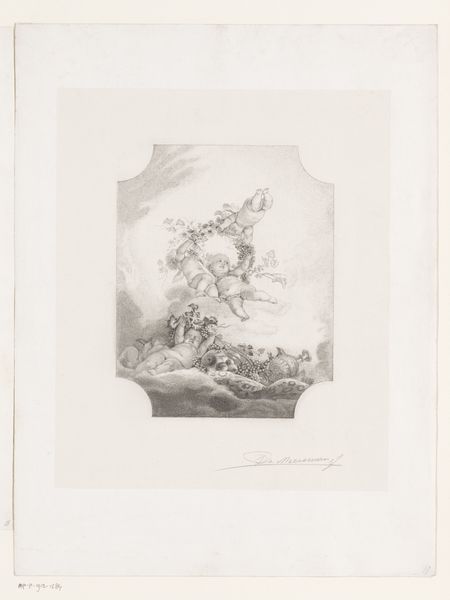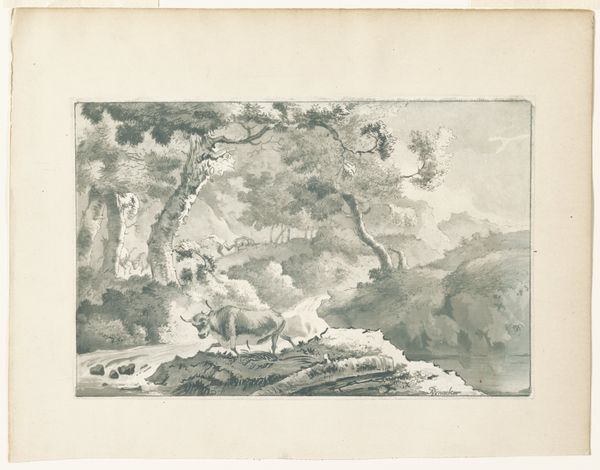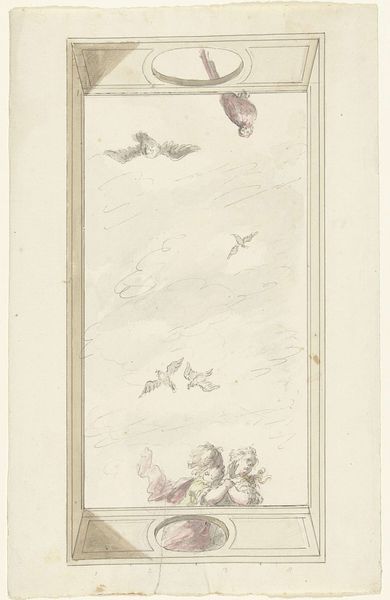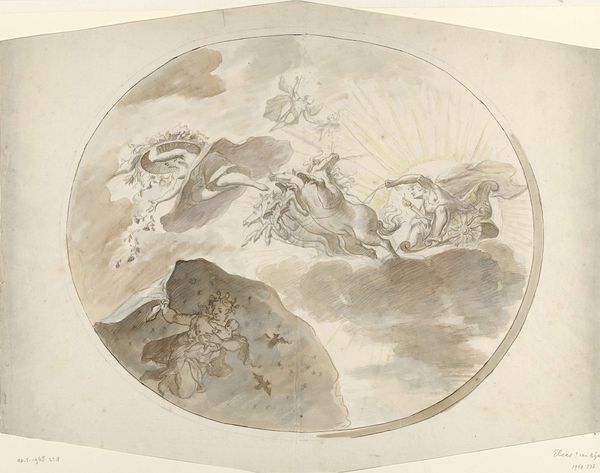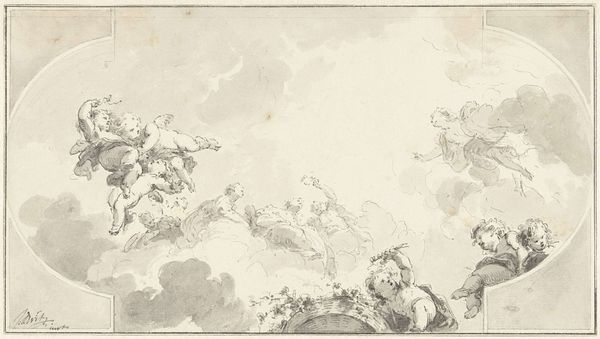
Ontwerp voor een plafondschildering met gezicht in de hemel waar Aurora Duisternis verdrijft 1715 - 1798
0:00
0:00
watercolor
#
water colours
#
allegory
#
landscape
#
watercolor
#
rococo
Dimensions: height 380 mm, width 497 mm
Copyright: Rijks Museum: Open Domain
Editor: So, this watercolor design, “Ontwerp voor een plafondschildering met gezicht in de hemel waar Aurora Duisternis verdrijft,” or “Design for a Ceiling Painting with a Face in the Sky where Aurora drives out Darkness,” by Dionys van Nijmegen, from sometime between 1715 and 1798…it feels very light and airy, almost dreamlike. There’s so much swirling motion. What do you see in this piece? Curator: I see the enduring power of allegorical imagery. This work draws heavily from a well of cultural memory, particularly the Greco-Roman tradition. Consider Aurora, the Roman goddess of dawn, banishing darkness—it’s not just a scene, but a potent symbol of hope and renewal that resonates even today. It connects us to centuries of artists and thinkers who have grappled with these themes. Editor: That makes sense. I was also thinking about how this design was likely intended for a ceiling. Does that change how we should view the figures, knowing they'd be seen from below? Curator: Absolutely! The upward gaze is crucial. Consider the way the figures are arranged; their gestures, their very poses, all meant to be experienced from a specific perspective. It elevates the viewer, literally and figuratively, into this celestial drama. Moreover, the use of watercolour further amplifies the sense of ethereality; a realm not quite of this earth, wouldn't you agree? Editor: Yes, definitely. It almost feels like a stage production. Thanks for pointing out those connections! It’s fascinating how this seemingly simple watercolour carries so much symbolic weight. Curator: Indeed. Images are never truly simple, are they? This piece demonstrates how artists can utilize long standing imagery to offer new ways of experiencing them.
Comments
No comments
Be the first to comment and join the conversation on the ultimate creative platform.
